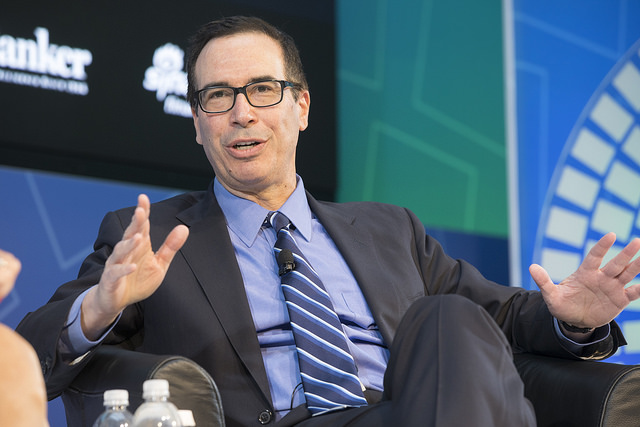
President Donald Trump signed Executive Order 13772 on February 2, 2017 in order to lay out core principles for regulators when creating regulations within the U.S. financial system. This order was an important step to streamlining the overly burdensome regulatory regime that has plagued the economic recovery after the Great Recession.
The Core Principles that President Trump listed out in the Executive Order are as follows:
- Empower Americans to make independent financial decisions and informed choices in the marketplace, save for retirement, and build individual wealth;
- Prevent taxpayer-funded bailouts;
- Foster economic growth and vibrant financial markets through more rigorous regulatory impact analysis that addresses systemic risk and market failures, such as moral hazard and information asymmetry;
- Enable American companies to be competitive with foreign firms in domestic and foreign markets;
- Advance American interests in international financial regulatory negotiations and meetings;
- Make regulation efficient, effective, and appropriately tailored; and
- Restore public accountability within Federal financial regulatory agencies and rationalize the Federal financial regulatory framework.
Within the order, President Trump requested the Secretary of Treasury, Steven Mnuchin, to give a report to the President on the extent to which current regulations, laws, guidance, and more, promote the Core Principles or inhibit them, along with subsequent reports.
This June Secretary Mnuchin released the first of many reports on the financial system’s regulatory burdens. The report covered the U.S. depository sector, which includes banks, savings associations, and credit unions. The Secretary mentions that it is of critical importance for banking regulation to align with the Core Principles. Therefore, the Secretary’s report lists out nine recommendations for regulatory reform within the depository system:
Addressing the U.S. Regulatory Structure: The current structure within the U.S. regulatory system is filled with duplication, overlap, and fragmentation, which can lead to ambiguity and repetitive regulations. This report suggests a number of changes to the function and structure of regulatory agencies in order to have greater coordination and to avoid regulatory overlap.
Refining Capital, Liquidity, and Leverage Standards: There is a heavy burden created by Dodd-Frank on banks when it comes to statutory stress testing. This report suggests raising the threshold of what is considered to be a big bank in order to ease these burdens.
Providing Credit to Fund Consumers and Businesses to Drive Economic Growth: The current regulatory burden has contributed to limited credit being passed onto consumers, which inhibits economic growth. The Treasury recommends increasing banks’ capacities to lend and their abilities to design and deliver lending products while maintaining safety standards.
Improving Market Liquidity: The many regulations implemented through Dodd-Frank have been limiting market liquidity within the banking system. By enacting significant changes to these regulations, including the Volcker Rule, the report suggests that it would support economic growth, avoid systemic risk, and minimize the risk of a taxpayer-bailout.
Allowing Community Banks and Credit Unions to Thrive: Ever since Dodd-Frank law was signed into law, community banks and credit unions have been burdened significantly with an average of one institution being shuttered daily. The report suggests exempting banks with assets under $10 billion from a number of regulatory provisions in order to ease this burden.
Advancing American Interests and Global Competitiveness: Many international regulatory standards create an unfriendly environment for banks of any size and form within the U.S. The Treasury suggests that all international standards imposed on U.S. banking agencies be reviewed in order to minimize negative economic consequences.
Improving the Regulatory Engagement Model: With a lack of coordination and communication between governmental agencies and boards of banking organizations, there has been a decrease in effectiveness of regulations. A greater degree of inter-agency cooperation with themselves and boards of directors would allow for more transparency and accountability.
Enhancing Use of Regulatory Cost-Benefit Analysis: While Congress has imposed strict cost-benefit analysis requirements on regulatory agencies, the requirements are not uniform and consistent among the different agencies. Therefore, by adopting a more consistent and transparent cost-benefit analysis of regulations, there will be less confusion within the banking system.
Encouraging Foreign Investment in the U.S. Banking System: Foreign direct investment is an excellent way to diversify risk and expand economic growth. The report suggests increasing these investments in order to broaden international corporate investment in our banking system.
Photo Credit: Stephen Jaffe

